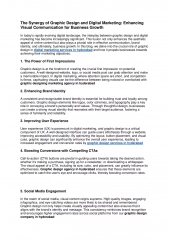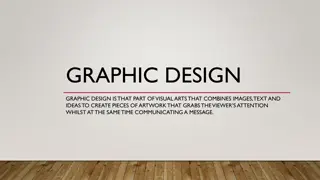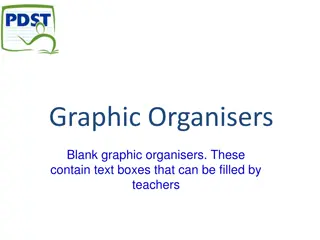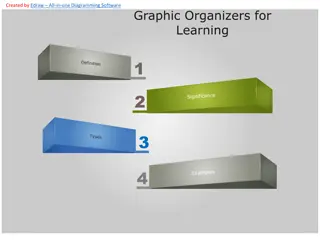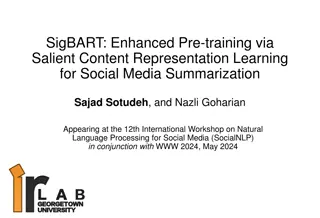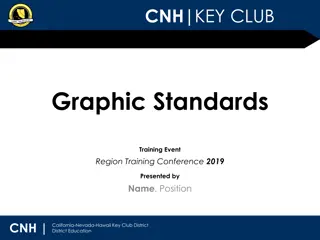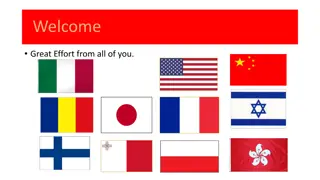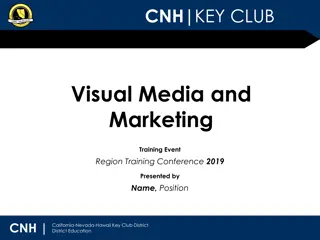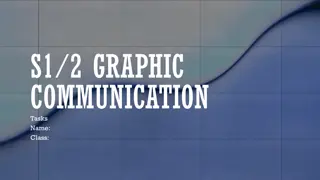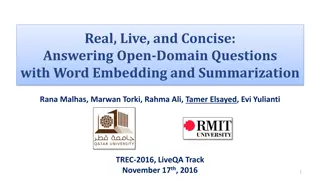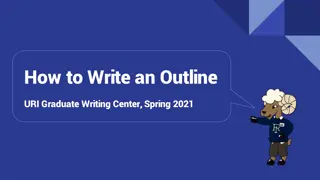Mastering Story Summarization with Graphic Organizers
Dive into the art of summarizing stories effectively using graphic organizers like the "Somebody, Wanted, But, So, Then, Finally" method. Learn to identify main characters, their desires, conflicts, resolutions, and more for concise and impactful summaries.
Download Presentation

Please find below an Image/Link to download the presentation.
The content on the website is provided AS IS for your information and personal use only. It may not be sold, licensed, or shared on other websites without obtaining consent from the author. Download presentation by click this link. If you encounter any issues during the download, it is possible that the publisher has removed the file from their server.
E N D
Presentation Transcript
Have you ever summarized a story or a movie to your friend? Did they stop listening before you were finished?
Summaries Summaries are short and give only the basic information. Summaries get right to the point.
Summarizing Organizer One way to summarize stories and informational text is to use the: Somebody, Wanted, But, So, Then, Finally Somebody, Wanted, But, So, Then, Finally graphic organizer. Somebody Somebody Wanted Wanted Then Then Finally Finally But But So So
Somebody This section of the organizer identifies the main character and/or other important characters from the text. It is a good idea to provide a brief description about the character. This is a good time to practice writing with appositives. Example: Example: Tiger Lily, Michelle s gray spotted cat, wanders aimlessly around the house during the day. My brother, a human garbage disposal, can consume an entire bag of Family Size Doritos in one sitting. Samantha, a seventh grader at MTMS, enjoys spending time with her family and friends.
Wanted In this section, explain what the character desires or is seeking. You may also choose to use other powerful verbs. For example: feared, cared about, hoped, etc.
But This section of the graphic organizer is geared toward identifying a conflict or problem. Ask yourself: What went wrong? Remember: Never start your sentence with But Choose a transition word, such as, However
So This section identifies how the character addresses the conflict. Ask yourself: What did the character do about it?
Then As a result of the character s actions, explain what happens next. Remember to use appropriate transition words to lead into this portion of your summary. Ask yourself: What happened as a result of the character s actions?
Finally Explain if and how the conflict or problem is solved. Ask yourself: What was the final outcome or resolution?
Fold your paper into 4 sections: Somebody Somebody Wanted Wanted But But So So
On the backside: Then Then Finally Finally
Writing a Summary The following example shows how to break down a chapter from the novel using the Somebody, Wanted, But, So, Then, Finally strategy.
Somebody Somebody Wanted Wanted Annemarie Annemarie and Ellen are two friends and Ellen are two friends living in Copenhagen, Denmark. living in Copenhagen, Denmark. After school one afternoon, they After school one afternoon, they wanted wanted to race each other down the to race each other down the sidewalk. sidewalk. But But So So However, However, both girls were stopped by both girls were stopped by two Nazi soldiers on the corner of two Nazi soldiers on the corner of Osterbrogade Osterbrogade. . Annemarie Annemarie and Ellen nervous yet nervous yet respectful as they were respectful as they were interrogated by the men. interrogated by the men. and Ellen were both were both
Then Then Finally Finally After they were dismissed, the girls After they were dismissed, the girls swore they wouldn t share this swore they wouldn t share this experience with experience with their mothers their mothers because they didn t want to worry because they didn t want to worry them them. . Having already found out by Having already found out by Annemarie s younger sister Annemarie s younger sister Kirsti mothers i mothers instructed the girls to never nstructed the girls to never take that route home from school take that route home from school again again in fear that the soldiers would in fear that the soldiers would remember their faces. remember their faces. Kirsti, the , the
Putting It Together Begin with a topic sentence that introduces what you are writing about (you may want to include where and when the story is taking place, the main characters, and the characters intentions in that chapter or story). Using your summarizer, combine each of the sections so that they are written in chronological order. Use transition words to go from one description of the chapter/story to the next description. Use strong vocabulary (vivid verbs, identifiable nouns, meaningful adjectives, etc.) Finish with a concluding sentence that wraps up your summary.
Example: The following example is a summary for chapter 1 of Number the Stars. Note: Topic sentence Detailed events in chronological order Transitions Vivid vocabulary Sentence variety Concluding sentence
Chapter 1 of Number the Stars begins with the two main characters, Annemarie Johansen and Ellen Rosen walking home from school one afternoon. The two girls decide to race one another down the sidewalk. Abruptly, the girls are stopped by two Nazi soldiers at the corner of the street. Interrogated by the two men, Annemarie and Ellen, although very nervous, both remained respectful and were eventually allowed to continue their walk home. The best friends promised one another that they would not tell their mothers of the incident to avoid worrying them. However, with the news spreading quickly, their secret did not last very long. Mrs. Johansen and Mrs. Rosen instructed the girls to never take that same route again because it was unsafe to be remembered by the soldiers.
Topic Sentence Topic Sentence Summary begins with a Summary begins with a clear topic sentence that clear topic sentence that states the main idea of states the main idea of the selection. the selection. Summary begins with a Summary begins with a topic sentence that topic sentence that states the main idea of states the main idea of the selection the selection Summary may or may Summary may or may not state the main idea not state the main idea of the selection, or it of the selection, or it may not do so at the may not do so at the beginning. beginning. Summary does not state Summary does not state the main ideas of the the main ideas of the selection. selection. Organization Organization All other major points are stated carefully and arranged in a logical order. All other major ideas are stated and arranged in a generally logical order. States some, but not all, major ideas and not necessarily in a logical order. States few major ideas and does not use a logical order. Concluding Sentence Concluding Sentence Concluding sentence effectively brings the summary to a close, but no details or reflections are added. Concluding sentence brings the summary to a close, but extraneous details or reflections may be added. Summary may lack a conclusion, include extraneous details, or reflections, or repeat the topic sentence. Lacks a conclusion and includes extraneous or minor details or reflections. Development of Ideas Development of Ideas Writing is unified and coherent throughout. Relevant details of the characters, events, and/or setting are included. An appositive has been used. The progression of ideas and information is, for the most part, logical. Some details of the characters, events, and/or setting are included. An appositive may have been used. Development of ideas is not completely logical or coherent. Details are lacking. Writing lacks unity and coherence. The summary is very vague, making it difficult to follow. Mechanics, Grammar, Mechanics, Grammar, and Spelling and Spelling There are few errors (0- 3) in mechanics, grammar, and spelling. There are some errors (4-5) in mechanics, grammar, and spelling. There are several errors (6-7) in mechanics, grammar, and spelling. Serious errors (8+) in mechanics, grammar, and spelling.



